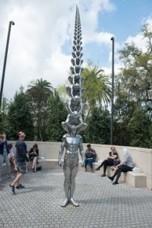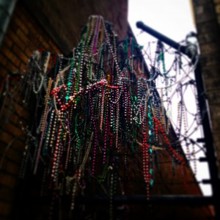- Events & Programs Home
- Calendar
- Accessibility
- Adults
-
Families & Teens
- Families & Teens Home
- 10x10 Teen Art Expo
- Art on the Rise
- Art Together: Art Making for Families with Children Ages 3–5
- Babies Sing with May Festival Minis
- Boy Scouts / Girl Scouts
- CAM Kids Day
- Family Storytime and Gallery Walk
- Family Studio: Art Making for Families with Children Ages 6–12
- Games in the Galleries
- Members-Only Baby Tours
- Public Baby Tours
- REC Reads
- Rosenthal Education Center (REC)
- Saturday Morning Art Class
- See Play Learn Kits
- Summer Camp
- Teen Fest: Zine and Comic Exchange
- RECreate
- Teachers
- Community Outreach
- Fundraisers
- Plan Your Own Event

- Events & Programs Home
- Calendar
- Accessibility
- Adults
-
Families & Teens
- Families & Teens Home
- 10x10 Teen Art Expo
- Art on the Rise
- Art Together: Art Making for Families with Children Ages 3–5
- Babies Sing with May Festival Minis
- Boy Scouts / Girl Scouts
- CAM Kids Day
- Family Storytime and Gallery Walk
- Family Studio: Art Making for Families with Children Ages 6–12
- Games in the Galleries
- Members-Only Baby Tours
- Public Baby Tours
- REC Reads
- Rosenthal Education Center (REC)
- Saturday Morning Art Class
- See Play Learn Kits
- Summer Camp
- Teen Fest: Zine and Comic Exchange
- RECreate
- Teachers
- Community Outreach
- Fundraisers
- Plan Your Own Event
Blog: CAM Uncovered
Blog: CAM Uncovered
- Home
- Plan Your Visit
- Art
-
Events & Programs
- Events & Programs Home
- Calendar
- Accessibility
- Adults
-
Families & Teens
- Families & Teens Home
- 10x10 Teen Art Expo
- Art on the Rise
- Art Together: Art Making for Families with Children Ages 3–5
- Babies Sing with May Festival Minis
- Boy Scouts / Girl Scouts
- CAM Kids Day
- Family Storytime and Gallery Walk
- Family Studio: Art Making for Families with Children Ages 6–12
- Games in the Galleries
- Members-Only Baby Tours
- Public Baby Tours
- REC Reads
- Rosenthal Education Center (REC)
- Saturday Morning Art Class
- See Play Learn Kits
- Summer Camp
- Teen Fest: Zine and Comic Exchange
- RECreate
- Teachers
- Community Outreach
- Fundraisers
- Plan Your Own Event
- Give & Join
- About
- Tickets
- Calendar
- Exhibitions
- Collections
- Blog
- Shop
NAEA Adventures in NOLA
by Emily Hotlrop
4/22/2015
learning & interpretation , education , youth & families , Emily Holtrop , interpretation , travel

Recently, I attended the National Art Education Association (NAEA) annual convention in New Orleans. The NAEA is the leading professional membership organization exclusively for visual arts educators. Members include elementary, middle and high school visual arts educators, college and university professors, researchers and scholars, teaching artists, administrators and supervisors, and art museum educators. NAEA represents members in all fifty states plus the District of Columbia, U.S. Possessions, most Canadian Provinces, U.S. military bases around the world, and twenty-five foreign countries.
 I have been a member of NAEA for almost thirteen years (as long as I have been at the CAM) and I have attended the conference every year. It has become my annual museum education vacation. It is a great time to reconnect with museum education friends and to have dedicated time to recharge my professional batteries and reflect on the work of museum education. It may seem strange that I need to travel to another city to reflect on my work, but when you are in the thick of school tours, public programs, working with volunteers and planning exhibitions, it is easy to lose sight of the bigger picture.
I have been a member of NAEA for almost thirteen years (as long as I have been at the CAM) and I have attended the conference every year. It has become my annual museum education vacation. It is a great time to reconnect with museum education friends and to have dedicated time to recharge my professional batteries and reflect on the work of museum education. It may seem strange that I need to travel to another city to reflect on my work, but when you are in the thick of school tours, public programs, working with volunteers and planning exhibitions, it is easy to lose sight of the bigger picture.
Each year the conference takes on a different vibe, there is always a buzz amongst museum educators as to the hot topics in the field, those items we have been holding onto waiting for the conference to come around so we can chat with our comrades in the museum trenches. This year the hot button issues were leadership in the field, diversity (both as it pertains to our field and to the people walking through the doors of each of our museums), the push to publish and research.
Before I get ahead of myself elaborating on a couple of these items, I should make one small disclaimer, I am not only a member of NAEA, I am also a new member of their Board of Trustees. Over the last two years I have served as the Museum Education Division Director-Elect. At the conference this year, I took over as the Museum Education Division Director, a role I will have for the next two years.
 Okay, back to the conference. The two issues that I left the conference ready to tackle back at the CAM were around diversity and research. I attended an amazing session titled “Everyone is a Little Bit Racist” (an Avenue Q reference) in which museum educators from three museums discussed the importance of a unified cultural competency for all staff and volunteers. This session also discussed the definition of diversity and what that term really means as it pertains to museums, it is not just about race and gender, it is also about the diversity of thought and experience. I came back fired up ready to tackle this topic with our staff and volunteers. I think as we move even further into the 21st century it is going to become even more clear that museums are moving away from being only object-centered to being visitor-centered. Knowing that, it is time for museums to get to know who our visitors really are and how we can best serve their needs and interests.
Okay, back to the conference. The two issues that I left the conference ready to tackle back at the CAM were around diversity and research. I attended an amazing session titled “Everyone is a Little Bit Racist” (an Avenue Q reference) in which museum educators from three museums discussed the importance of a unified cultural competency for all staff and volunteers. This session also discussed the definition of diversity and what that term really means as it pertains to museums, it is not just about race and gender, it is also about the diversity of thought and experience. I came back fired up ready to tackle this topic with our staff and volunteers. I think as we move even further into the 21st century it is going to become even more clear that museums are moving away from being only object-centered to being visitor-centered. Knowing that, it is time for museums to get to know who our visitors really are and how we can best serve their needs and interests.
The second big topic I am fired up about and one I will be exploring over the next couple years revolves around scholarly research in the field of museum education. Often museum educators are thought of as the people at the museum who conduct tours, run public programs and come up with art making experiences (aka – arts & crafts) and do fun stuff with kids. While this is true and an important role for us to take on in our respective museums, museum education is also a serious field of study.
In that vein, the NAEA Museum Education Division is embarking on a nation-wide research project addressing this question: What are the benefits to 5th-8th grade students of engaging with original works of art within the context of object-based art museum programs that take place during the formal school day? For the full white paper on this initiative, please visit the NAEA Museum Education website. This is very exciting research for the field to take on and that in the end will help inform the work that we do in museum education and the Art Museum.
 In closing, I have returned to the CAM Division of Learning & Interpretation feeling recharged. A week spent in NOLA can do that, the beignets and hurricanes help as well.
In closing, I have returned to the CAM Division of Learning & Interpretation feeling recharged. A week spent in NOLA can do that, the beignets and hurricanes help as well.
Cincinnati, OH 45202
Toll Free: 1 (877) 472-4226
Museum Hours
Museum Shop
Terrace Café
Library
Cincinnati Art Museum is supported by the tens of thousands of people who give generously to the annual ArtsWave Campaign, the region's primary source for arts funding.

Free general admission to the Cincinnati Art Museum is made possible by a gift from the Rosenthal Family Foundation. Exhibition pricing may vary. Parking at the Cincinnati Art Museum is free.
Generous support for our extended Thursday hours is provided by Art Bridges Foundation’s Access for All program.

General operating support provided by:



